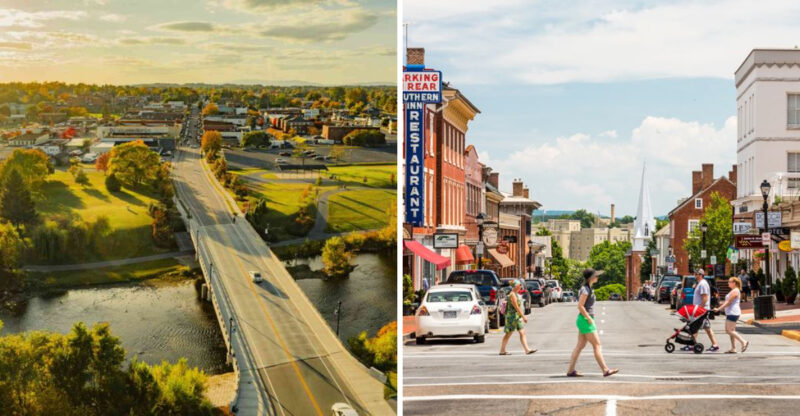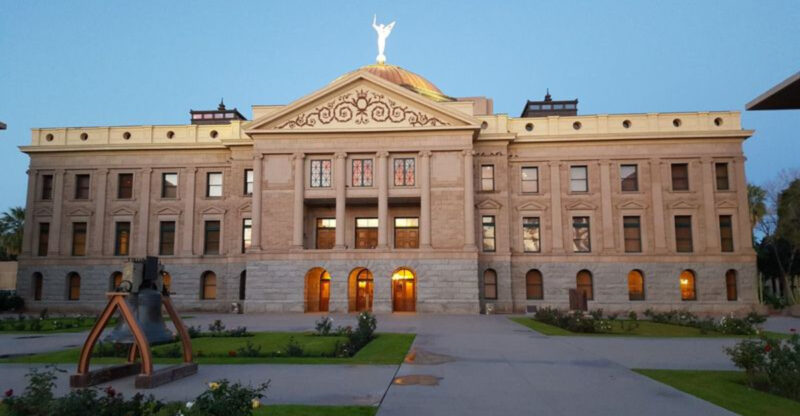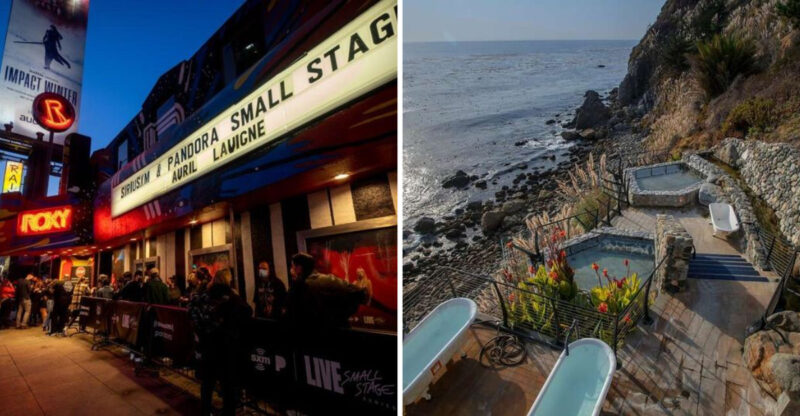Explore 15 Must See Relics Of The Wild West In Oklahoma And Rhyolite Nevada
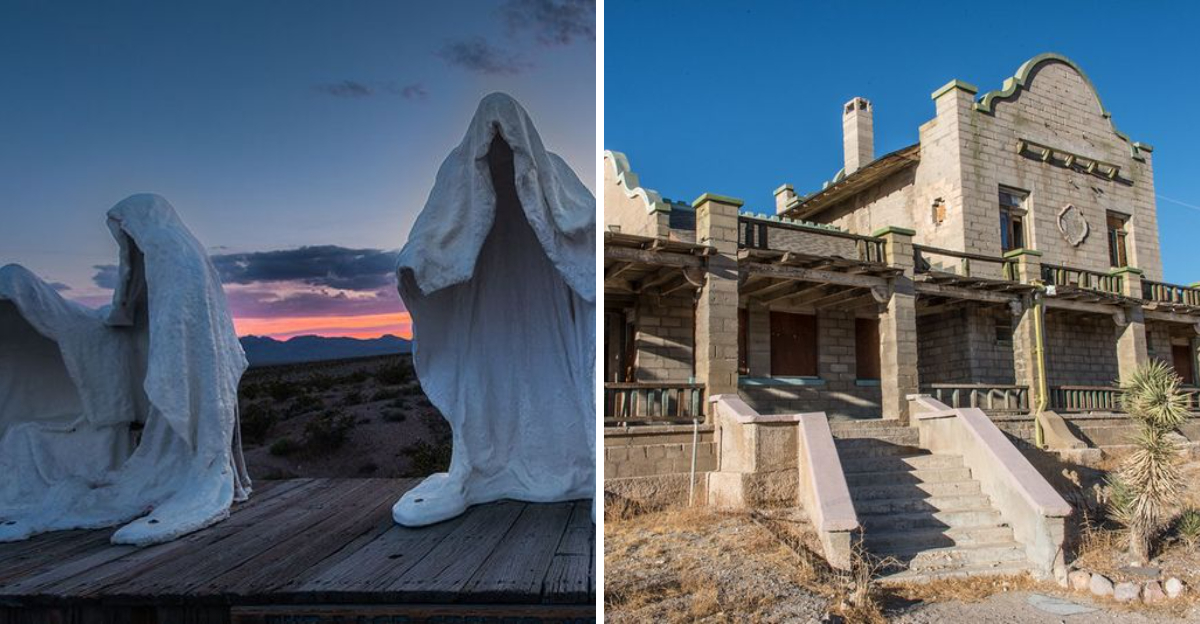
Stepping into the past has never been more exciting than exploring the incredible relics scattered across Oklahoma and Nevada. These historic sites tell stories of cowboys, gold miners, and pioneers who shaped the American frontier.
From ghost towns frozen in time to museums packed with authentic Wild West treasures, these destinations bring history to life in ways textbooks simply can’t match.
1. Cowboy Hill Cemetery

Perched above the Salt Fork of the Arkansas River, this sacred ground holds the stories of legendary cowboys who rode across the Cherokee Strip. Created in 1920 by the Cherokee Strip Cowpunchers Association, it became the final resting place for those who lived and breathed the cowboy lifestyle. Walking among the weathered headstones feels like stepping through a portal to another era.
Zack Miller, the famous owner of the 101 Ranch, lies buried here alongside fellow ranch hands and cattle drivers.
Each grave marker whispers tales of cattle drives, roundups, and the rugged life on the open range. It’s a peaceful spot where visitors can reflect on the courage and determination these pioneers displayed daily.
2. Pawnee Bill Ranch and Museum
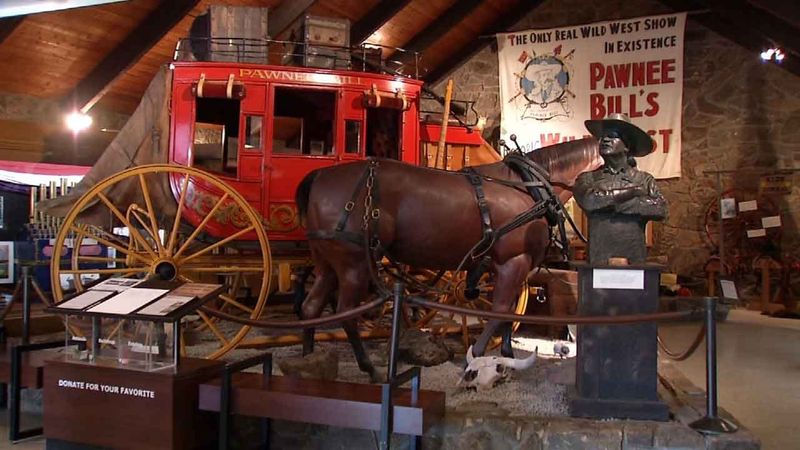
Gordon William Lillie earned his nickname “Pawnee Bill” by creating one of the most spectacular Wild West shows ever assembled. His ranch near Pawnee served as headquarters for performers, animals, and equipment that traveled across America and beyond. Today, the property welcomes curious visitors eager to discover authentic pieces of show business history.
Inside the museum, you’ll find costumes worn by sharpshooters, saddles used in dramatic performances, and photographs capturing the excitement of touring shows.
The buildings themselves showcase architectural styles popular during the frontier era. Walking through these halls connects you directly to the entertainment that defined an entire generation’s understanding of the West.
3. 101 Ranch Historic Site
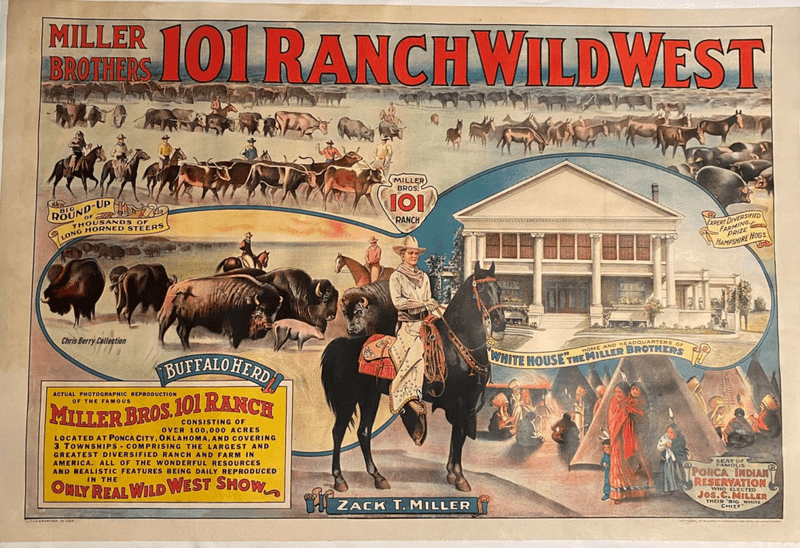
Sprawling across thousands of acres near Ponca City, this legendary cattle operation became synonymous with Wild West entertainment. From 1908 until the Great Depression ended its glory days, the 101 Ranch Wild West show toured internationally, bringing frontier excitement to audiences worldwide. The ranch itself was a working operation that supplied livestock and skilled riders for these spectacular performances.
Although the original ranch buildings have largely disappeared, various artifacts and historical markers preserve its incredible legacy.
Local museums display photographs, equipment, and personal items belonging to the Miller brothers who ran this empire. Visiting this area helps you understand how ranching and entertainment merged into something truly extraordinary.
4. Rhyolite Ghost Town
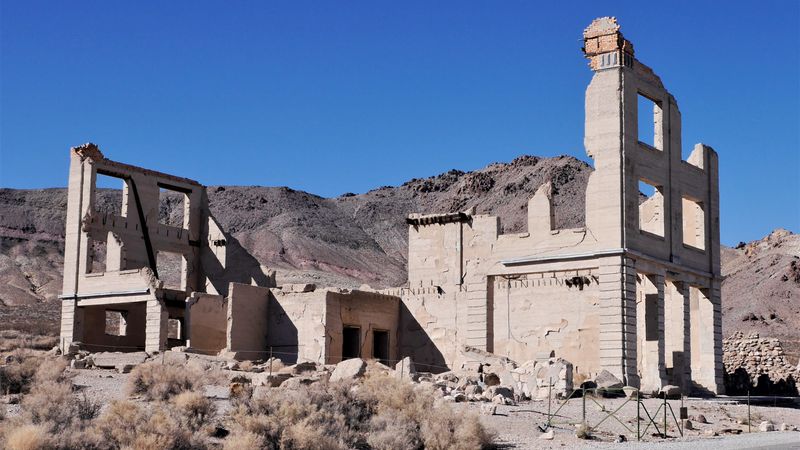
When gold fever struck in 1904, thousands rushed to this Nevada desert location hoping to strike it rich. Within just a few years, Rhyolite boasted electric lights, concrete sidewalks, and even an opera house. But when the gold ran out, people abandoned the town almost as quickly as they’d arrived, leaving behind haunting structures that still stand today.
The Cook Bank Building’s impressive facade remains remarkably intact, offering glimpses into the prosperity that once thrived here.
You can wander freely among the ruins, imagining the bustling streets filled with miners, merchants, and dreamers. Photographers especially love capturing the way desert sunlight plays across these crumbling walls.
5. Tom Kelly Bottle House
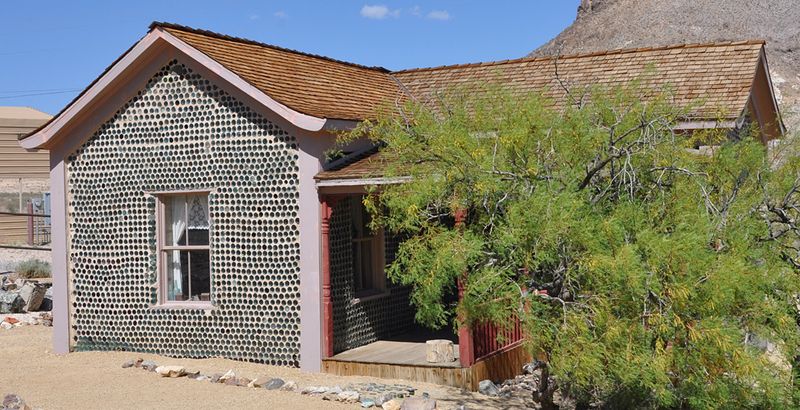
Building materials were scarce and expensive in the remote Nevada desert, so Tom Kelly got creative in 1906. He collected roughly 50,000 beer and liquor bottles, then cemented them together to construct his home. The result was not only practical but also surprisingly beautiful, with colored glass creating patterns that sparkle in the sunlight.
This quirky structure survived when most other Rhyolite buildings crumbled into dust. Walking around it reveals the ingenuity required to survive in harsh frontier conditions.
The bottle house demonstrates how pioneers adapted to challenges using whatever resources they could find. It’s become one of Nevada’s most photographed and beloved oddities.
6. Goldwell Open Air Museum
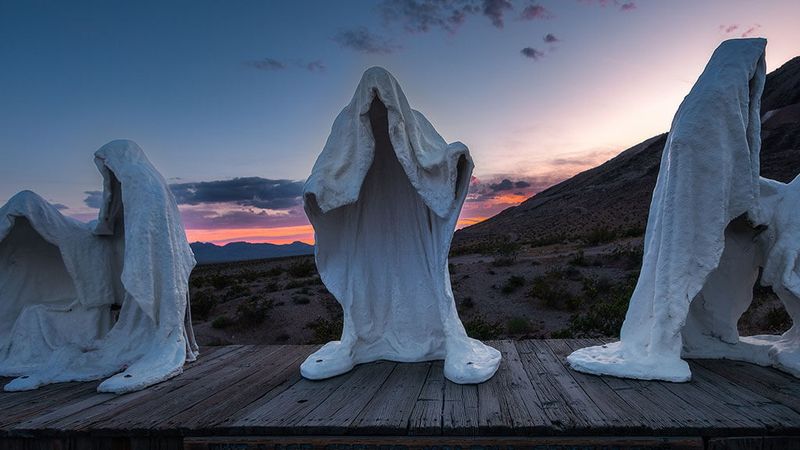
Art meets history in this unusual outdoor gallery located near Rhyolite’s ruins. Belgian artist Albert Szukalski created the most famous installation here in 1984, featuring life-sized ghost figures draped in flowing robes. These haunting sculptures stand eternally against the desert backdrop, creating an eerie connection between past and present.
Other artists have contributed pieces that complement the desolate landscape and abandoned town nearby. The museum charges no admission, allowing anyone to experience this unexpected cultural treasure.
It’s a thought-provoking place where modern creativity honors the memories of those who once called this harsh environment home. The contrast between contemporary art and frontier history creates something truly memorable.
7. Berlin-Ichthyosaur State Park

Few places combine prehistoric wonders with Wild West history quite like this Nevada treasure. The Berlin mining town operated during the early 1900s, extracting precious metals from surrounding hills. But millions of years before miners arrived, ancient seas covered this area, and massive marine reptiles called ichthyosaurs swam through the waters.
You can explore the preserved ghost town buildings, then walk to the fossil shelter housing remarkably complete ichthyosaur skeletons.
These creatures measured up to 50 feet long and lived during the dinosaur age. The park offers a unique double feature frontier mining history combined with paleontological discoveries. It’s an educational adventure that appeals to history buffs and science enthusiasts alike.
8. National Cowboy and Western Heritage Museum
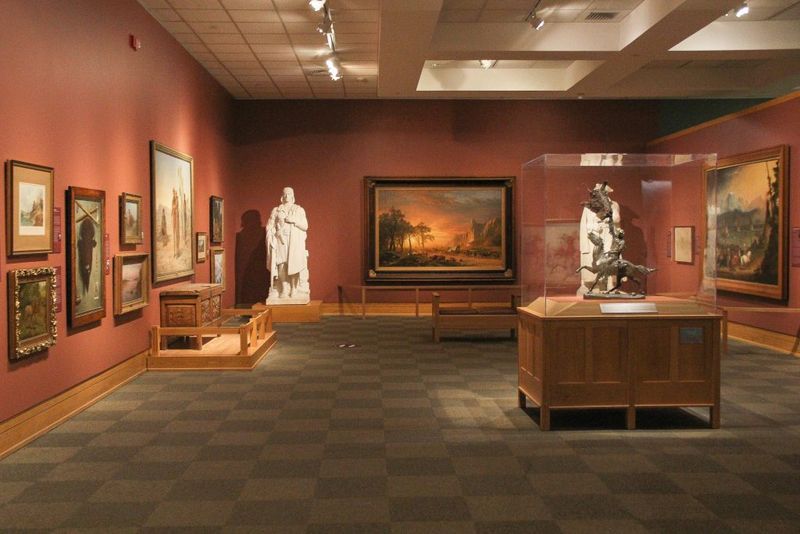
Oklahoma City houses one of America’s premier institutions dedicated to preserving cowboy culture and Western heritage. This massive museum contains galleries filled with authentic artifacts, fine art depicting frontier life, and interactive exhibits that transport visitors back in time. Collections include everything from antique firearms to Native American crafts and rodeo memorabilia.
The Prosperity Junction exhibit recreates an entire turn-of-the-century cattle town, complete with storefronts and period details.
Kids especially enjoy exploring the recreated environments and trying on cowboy gear. Art lovers appreciate the extensive Western painting and sculpture collections featuring works by renowned artists. Whether you’re a serious history student or casual tourist, this museum offers hours of fascinating discoveries.
9. Fort Reno Historic Site

Established in 1874, this military outpost played crucial roles in protecting settlers and managing relationships with Native American tribes. Cavalry units stationed here patrolled vast territories, responding to conflicts and maintaining order across the frontier. The fort also served as a remount station where the Army bred and trained horses for military service.
Many original buildings still stand, including officers’ quarters, barracks, and stables constructed from native stone.
Visitors can walk the same grounds where soldiers drilled and horses thundered across parade fields. The site provides insight into military life during the Wild West era. Interpretive signs explain the fort’s various roles throughout its active years.
10. Guthrie Historic District

When Oklahoma Territory opened for settlement in 1889, Guthrie sprang up literally overnight during the famous Land Run. Within hours, thousands of settlers claimed lots and began building what would become the territorial capital. Today, the entire downtown area preserves over 400 buildings from that exciting era, creating the largest urban historic district in Oklahoma.
Walking these brick-paved streets feels like time travel, with Victorian storefronts, ornate facades, and period details everywhere you look.
Many buildings house museums, antique shops, and restaurants that maintain historical character. The Scottish Rite Masonic Temple stands as one of the world’s largest Masonic buildings. History comes alive here in ways few other places can match.
11. Cherokee Strip Museum
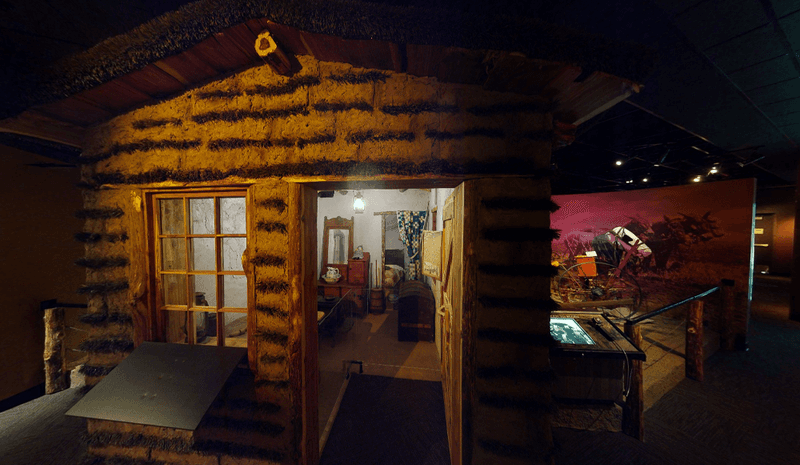
Enid owes its existence to the Cherokee Strip Land Run of 1893, when thousands raced to claim free homestead land. This museum preserves that dramatic moment in history through photographs, personal belongings, and stories from participants. Exhibits explain how the Cherokee Strip was originally leased to cattle ranchers before being opened for settlement.
You’ll find recreated pioneer homes, farming equipment, and displays showing daily life challenges faced by early settlers.
The museum also honors the cowboys who worked the strip during its ranching days. Special collections include vintage clothing, household items, and documents that reveal intimate details about frontier existence. It’s an essential stop for understanding Oklahoma’s unique settlement history.
12. Chisholm Trail Museum
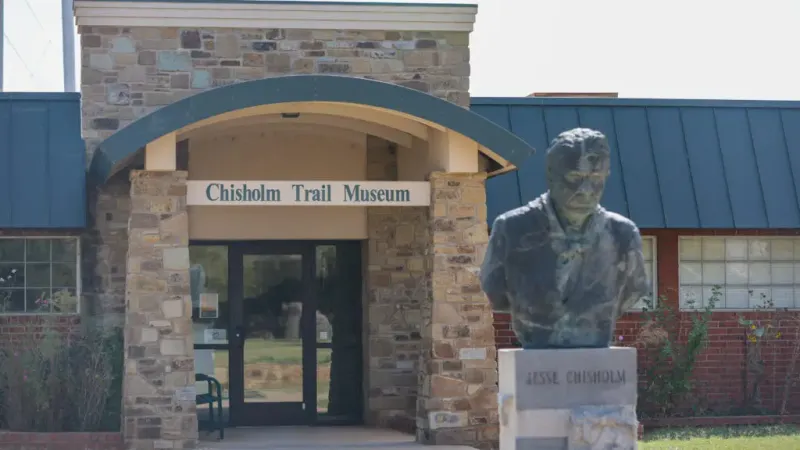
Millions of longhorn cattle traveled the Chisholm Trail between Texas and Kansas railheads during the late 1800s. This museum in Kingfisher sits along the actual trail route, making it the perfect location to explore cowboy and cattle drive history. Exhibits feature saddles, branding irons, chuck wagon equipment, and other tools essential to moving vast herds across open country.
Personal stories from trail bosses and cowboys bring the dangerous, exhausting work to life. You’ll learn about river crossings, stampedes, and the months-long journeys required to reach market.
The museum also preserves a historic governor’s mansion and other period buildings. It’s a comprehensive look at the cattle industry that defined the Wild West economy.
13. Woolaroc Museum and Wildlife Preserve

Oil baron Frank Phillips created this remarkable 3,700-acre retreat in the Osage Hills during the 1920s. His rustic lodge now serves as a museum housing an extraordinary collection of Western art, Native American artifacts, and frontier memorabilia. The name “Woolaroc” combines woods, lakes, and rocks three features defining the beautiful property.
Beyond the museum, the preserve maintains herds of buffalo, elk, and longhorn cattle roaming freely across rolling hills.
Phillips was passionate about preserving both cultural history and natural heritage. Visitors can spend hours exploring the museum’s treasures, then enjoy scenic drives through the wildlife areas. It’s a unique combination that celebrates the Wild West’s natural beauty and human history simultaneously.
14. Rhyolite Train Depot Ruins

Railroad connections meant everything to mining towns, determining whether they prospered or perished. Rhyolite’s train depot once bustled with activity as ore shipments departed and supplies arrived daily. The Las Vegas and Tonopah Railroad made this remote desert location accessible, fueling the town’s rapid growth and eventual population of nearly 5,000 people.
Though mostly collapsed, the depot’s remaining stone walls and foundation reveal its former importance.
Standing among these ruins, you can almost hear the whistle of approaching trains and the shouts of workers loading precious ore. The depot’s decline mirrored the town’s fate when gold production dropped. It’s a poignant reminder of how quickly boom turned to bust in mining country.
15. Oklahoma Territorial Museum
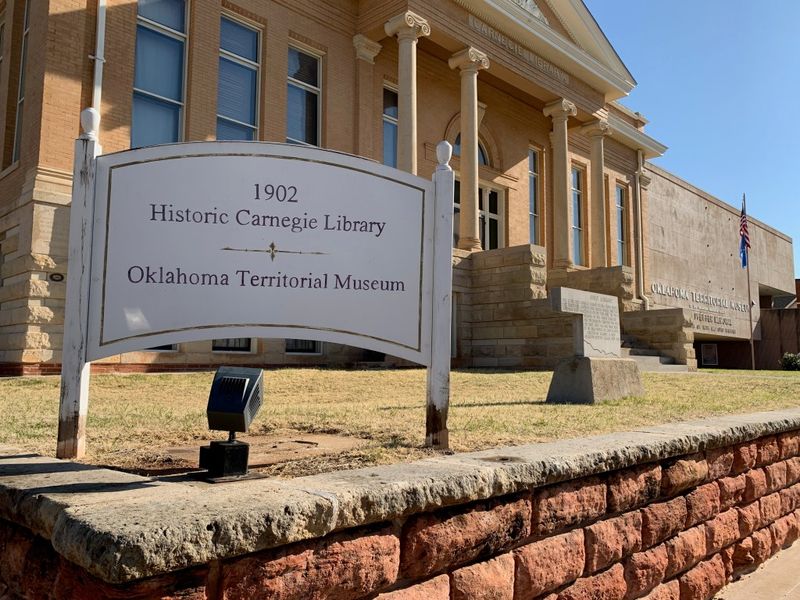
Housed in Guthrie’s beautiful 1902 Carnegie Library building, this museum focuses specifically on Oklahoma’s territorial period from 1889 to 1907. Exhibits explore the dramatic Land Runs, territorial government operations, and the diverse people who built communities from scratch. You’ll discover how settlers established schools, churches, and businesses almost overnight in previously empty prairie.
Collections include original documents, photographs, and personal items belonging to territorial officials and ordinary citizens alike. The museum explains complex issues like tribal relations, statehood debates, and economic development challenges.
Interactive displays help younger visitors understand this formative period. It’s an excellent complement to exploring Guthrie’s preserved historic streets, providing context for the buildings you’ll see throughout town.



